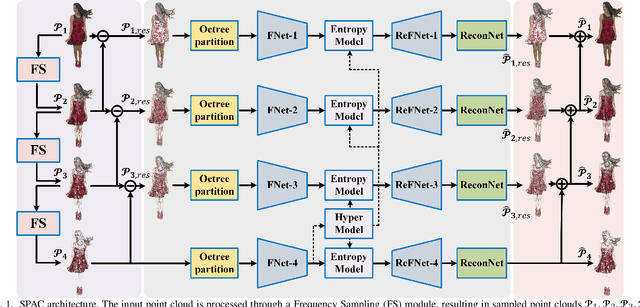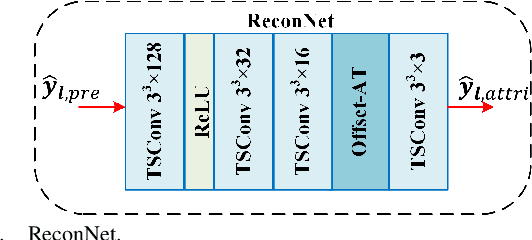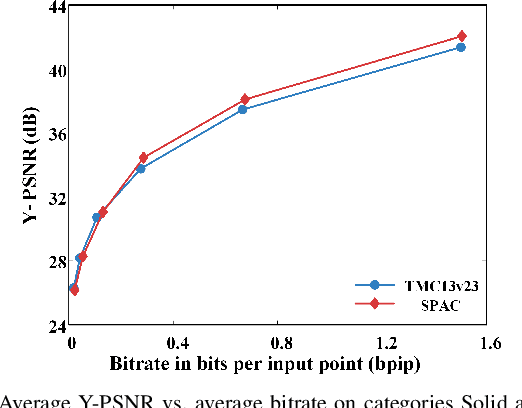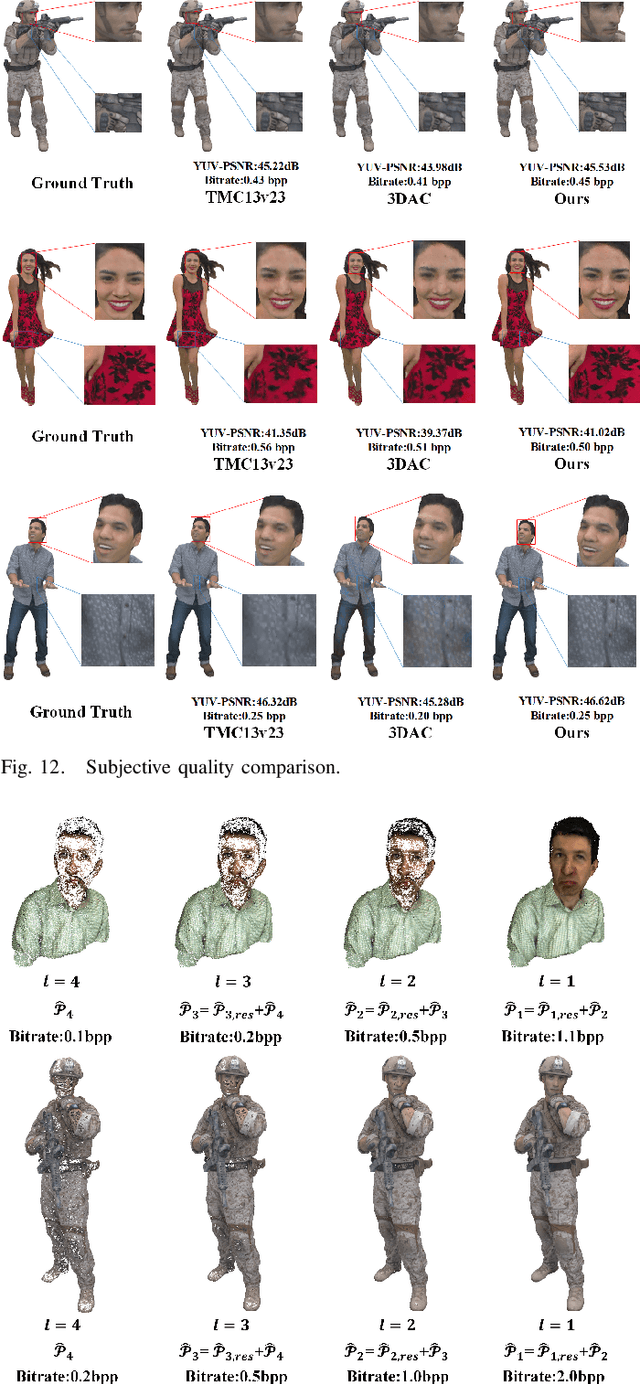SPAC: Sampling-based Progressive Attribute Compression for Dense Point Clouds
Paper and Code
Sep 16, 2024



We propose an end-to-end attribute compression method for dense point clouds. The proposed method combines a frequency sampling module, an adaptive scale feature extraction module with geometry assistance, and a global hyperprior entropy model. The frequency sampling module uses a Hamming window and the Fast Fourier Transform to extract high-frequency components of the point cloud. The difference between the original point cloud and the sampled point cloud is divided into multiple sub-point clouds. These sub-point clouds are then partitioned using an octree, providing a structured input for feature extraction. The feature extraction module integrates adaptive convolutional layers and uses offset-attention to capture both local and global features. Then, a geometry-assisted attribute feature refinement module is used to refine the extracted attribute features. Finally, a global hyperprior model is introduced for entropy encoding. This model propagates hyperprior parameters from the deepest (base) layer to the other layers, further enhancing the encoding efficiency. At the decoder, a mirrored network is used to progressively restore features and reconstruct the color attribute through transposed convolutional layers. The proposed method encodes base layer information at a low bitrate and progressively adds enhancement layer information to improve reconstruction accuracy. Compared to the latest G-PCC test model (TMC13v23) under the MPEG common test conditions (CTCs), the proposed method achieved an average Bjontegaard delta bitrate reduction of 24.58% for the Y component (21.23% for YUV combined) on the MPEG Category Solid dataset and 22.48% for the Y component (17.19% for YUV combined) on the MPEG Category Dense dataset. This is the first instance of a learning-based codec outperforming the G-PCC standard on these datasets under the MPEG CTCs.
 Add to Chrome
Add to Chrome Add to Firefox
Add to Firefox Add to Edge
Add to Edge